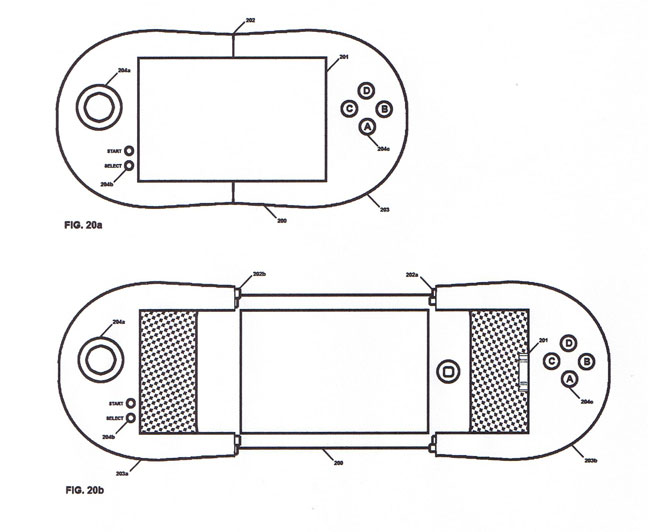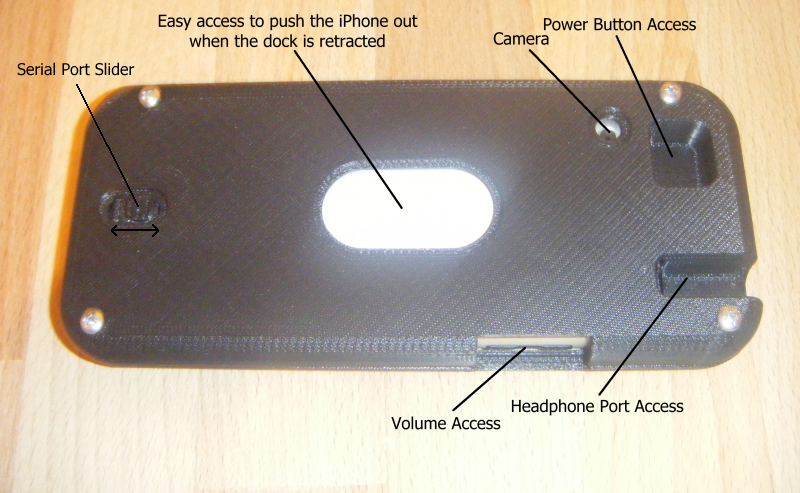STAY TUNED: Come back this Fri. (Aug 29) to find out who we picked as this year's America's Best Handling Car.
Perhaps no other single test can reveal as much about a car's handling as a full-bore hot lap of a racetrack. Within a few high-g turns, any idiosyncrasies hidden in the chassis begin to materialize, behavior that seems benign at six-tenths may suddenly become frightening at ten-tenths; the true handling stars quickly stand out from the merely good. There's nowhere to hide. No wonder cars squeal so much when you wring 'em out around a road course.
Of course, it helps if you conduct said hot-lapping on a great track with a great driver. And for our "Apex Predators" test we had both. Mazda Laguna Seca Raceway near Monterey, California, wriggles with 2.338 miles of tight, low-speed bends, knuckle-whitening sweepers, a V-max kink, and the elevator-in-a-freefall ride that is the infamous Corkscrew. To tame this asphalt bull we turned to professional road-racing star Randy Pobst (see accompanying story), who proved his skills by needing only one warm-up lap to feel comfortable in each car, by invariably producing his fastest lap on his first flyer, and by never putting a wheel wrong all day.
Though the resulting lap times were intriguing, ranking speed wasn't our goal. Instead, after each run, Pobst provided a thorough debrief of his impressions, noting each car's strengths and weaknesses. At the end of the day-after working his way up from the slower cars to the fastest in the field-Pobst then delivered a detailed, worst-to-best finishing order from his professionally honed perspective-an invaluable addition to our objective and subjective data.
G Whiz
What better location than Laguna Seca to get into the nitty-gritty of handling. As each car travels counterclockwise around the course (the solid line), the dotted lines represent the magnitude of lateral g Randy is generating, plotted perpendicular to the driving line. Serving as a visual gauge, the width of the white band signifies 2 g (1 g to either side of the driving path). And each car's peak g in most of the corners, as well as peak speeds between them, are also indicated. As your eye travels around each one, try to feel these g-tilt slightly left or right in your chair.
You'll notice these lateral acceleration peaks are a lot higher than what we obtained earlier from the skidpad. Why? Around the skidpad, we're averaging the car's cornering, erasing any small irregularities. On an undulating track, however, road camber and vertical loading, can produce dramatic spikes in the results.
As you will see, that mammoth number-making machine-the Viper-is at it again here, but there are plenty of nuances to be found among the other cars as well. Note how the Viper does a big correction at the end of turn 2. Or how early the Porsche starts making lateral g entering turn 4. Ideally, each turn's cornering episode starts early, grows to be as big as possible, and ends late. But not too late, of course.

CLICK TO VIEW GALLERY
CHEVROLET COBALT SS
BEST LAP (MIN:SEC): 1:47.751
AVG. LATERAL ACCELERATION: 0.545 G
SUBJECTIVE RANKING: 9TH
"Pretty darn good," says Pobst after parking the Cobalt SS post-laps. "A lot less steering response than some other front-drive cars I've been in-it can feel a little bit numb-but the steering is linear, with no play, so you have good control." (It's worth pointing out that the Cobalt tied with the Audi R8 for second-heaviest steering effort, and Pobst had commented previously that he's not a fan of overly light steering.) As for responsiveness, Pobst notes, "quite a bit of understeer in the middle of corners, and when I tried to rotate the car it wouldn't let me. I could see the stability-control light winking at me-I'm sure the system never fully turned off." He also says the combo of 260 horses and front drive produced marked torque steer when powering out of second-gear corners. In terms of overall feel, though, Pobst has lots to praise. "Shock damping is really good-not harsh, yet the body roll was well controlled. Combined with the flexible engine, and especially considering the price, this is a really fine effort, a good package for a front-drive car. Much more refined than the Shelby GT500KR."
SUM UP: Pushes the limits of front drive-hard.
MINI COOPER S
BEST LAP (MIN:SEC): 1:51.977
AVG. LATERAL ACCELERATION: 0.515 G
SUBJECTIVE RANKING: 8TH
With one car already logged in his cerebellum, laps in the Mini provided Pobst with a basis for comparisons-which he immediately made. "It's clear the Mini handles better than the Cobalt. I can place the car precisely where I want it. And there's so much less understeer. A lot of front-drive cars understeer under power, but mid-corner the Mini was really nicely balanced. I got more and more aggressive-even got the tail to wag a little bit, which is really enjoyable." Like the Chevy, the Mini tended to overcook its tires when exiting tight turns under throttle. "A lot of wheelspin coming out of Turn 11-more even than in the Cobalt-but the Mini was better in the high-speed corners." In terms of steering, Pobst ranks the Mini on par with the Chevy. "Maybe the Cobalt didn't communicate quite as well, but the steering is comparable in both cars. Doesn't feel like it's power-assisted." Pobst also praises the Mini's stability. "Confidence-inspiring. Into Turn 4 I didn't brake at all, due to the sense of control I had. Overall, a fabulous car. I hate to rank it eighth, but you can only do so much with front drive."
SUM UP: Handling sweetness tops the Chevy's superior stick.
MITSUBISHI EVO MR
BEST LAP (MIN:SEC): 1:47.713
AVG. LATERAL ACCELERATION: 0.559 G
SUBJECTIVE RANKING: 6TH
Mitsu's ultimate Evo barely outgunned the feisty Cobalt SS around Laguna, yet after piloting his first all-wheel-drive car of the day, Pobst immediately remarks upon its mostly superior handling behavior. "The Evo has really good balance on turn-in. You can feel the tail moving around, a tendency to rotate at corner entry [no doubt the Evo's Active Yaw Control rear differential at work], which I like. And there's great traction, no wheelspin anywhere. In fact, I came out of the Corkscrew so hard I almost went off!" But while he sings high praise for the Evo's balance and grip, Pobst also notes that such talents come at a price. "It feels really predictable, but up to a point. When you get to the limit, it can let go suddenly. Once, going into Turn 5, I got sideways big-time. Still, a lot of fun, and pretty easy to catch with the four-wheel-drive system." For all its raciness, the Evo can't escape its everyday-Lancer roots. "Feels like it has a high center of gravity, tall and narrow-which it is. Almost tippy at times. And the steering is a little lighter than the Mini's or Cobalt's. Extremely well-balanced car, though."
SUM UP: Race-car character can't cloak family-car bones.
AUDI R8
BEST LAP (MIN:SEC): 1:40.920
AVG. LATERAL ACCELERATION: 0.610 G
SUBJECTIVE RANKING: 1ST
"Well, we're not in the little cars any more!" Pobst exclaims with a smile after his R8 hot laps (ooooh, you shoulda been there to hear this Bavarian UFO circle Laguna at warp speed). "Real race-car feel. So obvious it's a mid-engine car, especially after the front-drive cars. I felt like I was moving a lot less mass around when I entered corners, even though the R8 is still a relatively heavy car. There's no substitute for having the engine just ahead of the rear axle. That's the perfect place for it." Indeed, Pobst is all thumbs-up. "Steering feel is just terrific, and handling balance is superb. The mid-engine layout makes the R8 feel light on corner-entry. It wants to turn, but that's underlined with a real predictability. The amount of grip and the way the car cornered and rotated slightly was so much like a race car. Doesn't feel like it's four-wheel drive. Also, it's completely comfortable and luxurious." Does Pobst have any complaints at all? "After the first lap and a half, the front tires got hot and started to go off, so I didn't have the bite on corner-entry. Still, in terms of handling feel...utterly superb."
SUM UP: Want to make a race driver grin? Say "R8."

CLICK TO VIEW GALLERY
PORSCHE 911 TURBO
BEST LAP (MIN:SEC): 1:42.507
AVG. LATERAL ACCELERATION: 0.589 G
SUBJECTIVE RANKING: 4TH
We couldn't obtain a test unit of last year's best-handling winner, the Porsche GT3, nor could Porsche provide us with its even hotter sibling, the GT2. Yet our consolation prize, a 911 Turbo, acquitted itself admirably. "Porsche still offers a totally unique driving experience," says Pobst. "The Turbo, with all its stability systems turned off, demands full attention from the driver. The tail is far more active than any other car I've driven today. It's very different from the others. The more I drove it, the more I enjoyed it." Pobst claims the Turbo's strong subjective ranking owes to its exemplary balance. "I was busy driving it, but it was still rewarding because I like getting a car to drift, to use all four wheels. As I started to raise my entry speeds, the back started working more and more. I had to be right on top of the Turbo all the time; it took a lot of quick steering corrections. The Audi felt more modern, more peaceful at turn-in, while the 911 is an E-ticket ride. Steering was fabulous, quick and satisfying. Much as I love the Turbo, though, in terms of overall handling the R8 is a better car."
SUM UP: Totally involving-sometimes more than what you want.
NISSAN GT-R
BEST LAP (MIN:SEC): 1:40.453
AVG. LATERAL ACCELERATION: 0.628 G
SUBJECTIVE RANKING: 5TH
"Sweet!" gushes Pobst after his maximum laps in Godzilla. "Really comfortable on the track. GT-R can easily handle its power-I want more! Minimal body roll, but still good control. I could break the rear end loose when I wanted to, but when it went it really went. Steering is quick, very quick responding-which allowed me to catch the car easily. Really, it's a beastly car-not necessarily in a bad way. It's a visceral car to drive. A lot of fun." Which begs the obvious question: Given his enthusiasm, and the GT-R's impressive track numbers, why didn't Pobst rank the GT-R higher than fifth? "While it predominately understeers slightly, it can easily be provoked into snap oversteer. That was fun, but the GT-R is violent when it breaks loose; the R8, in contrast, drifts sweetly. The "R" mode really isn't a race mode-there's still a lot of stability control working, which is fine for the average guy but frustrating for me as a race driver. And before you turn stability control completely off, boy, you'd better have a lot of car-control clinics under your belt. The R8 is much more refined, a muscular dancer. The GT-R is a wrestler."
SUM UP: Lives up to its Godzilla nickname.
MAZDA RX-8
BEST LAP (MIN:SEC): 1:50.418
AVG. LATERAL ACCELERATION: 0.524 G
SUBJECTIVE RANKING: 3RD
Already those of you who live and die by the numbers are aghast. Second-slowest lap time? Next to last in lateral grip and the figure eight? Yet a third-place ranking by Pobst? Above my beloved GT-R? Listen to Pobst: "In the purest sense of a sports car, the rear-drive RX-8 is the most satisfying through corners. I felt like it was a glove on my hand. I could put it right where I wanted. Extremely well balanced, easy to drift, unfettered by weight. The all-wheel-drive cars tend to understeer, and then when they do break loose it's a big event and a lot happens. In the RX-8, on the other hand, things happen a little bit at a time. It's just so much fun to drive." Pobst's words only reinforce our own: Big handling numbers are instructive and meaningful, but they often tell you nothing about the actual experience of driving a car, how it "feels." Though underpowered and under-tired compared with other entries here, the RX-8 has grace and fluidity and balance like few other sports cars on the market today. "The more powerful cars feel like riding a horse," Pobst says. "The RX-8 feels like wings bolted right to your arms."
SUM UP: Optimized for humans, not for computers.
BMW M3
BEST LAP (MIN:SEC): 1:42.964
AVG. LATERAL ACCELERATION: 0.593 G
SUBJECTIVE RANKING: 2ND
Pobst's first three words after his M3 track laps: "What a ride!" And then he got exuberant. "Makes you a believer in rear drive. Refined, but it rocks, too. Given the car's power and the fact that it's riding on street tires, the traction is excellent. Turn 4 is a fast, top of third gear corner, and while exiting at over 100 mph, I could push the M3 into a small drift. Sweetheart. Overall balance is really good-I don't remember much understeer at all. Also, the M3's steering feel is one of the best here. You've got that big fat wheel rim in your hands. Communicative and quick steering, with great satisfaction. There's body roll but not a sense of it. The damping keeps everything under control without harshness. Greater refinement than in the RX-8; you can feel there's more money in the pot." Pobst experienced a few hiccups with the DSG transmission ("shifts were harsh, and a few times when I tried to downshift it stayed in the higher gear"), but he had nothing but kudos for the chassis. "Not ready to say it's better than the R8, but what a ride!"
SUM UP: The lofty 3 Series chassis raised to even loftier heights.
FORD SHELBY GT500KR
BEST LAP (MIN:SEC): 1:44.716
AVG. LATERAL ACCELERATION: 0.591 G
SUBJECTIVE RANKING: 10TH
For a moment, the Laguna pit lane sounded like an episode of "The Dukes of Hazzard." "Yeeeee haaaawww!" yelled Pobst as he exited the bright-blue Shelby. "God bless the ponycar!" Then we gave him a few moments to calm down. "Honestly, I think my expectations were low, based on the inexpensive Mustang chassis. But the GT500KR may well have the highest fun factor here. It's not sophisticated, but the Shelby crew has done an amazing job of making this chassis work. I could drive the living daylights out of it. And the exhaust note sure doesn't hurt." Yet "fun factor" and "great handling" aren't necessarily synonymous. And while he clearly enjoys himself power-sliding the big KR around Laguna, Pobst readily admits the Shelby has its shortcomings. "Every so often, a hinge would show up. When exiting a corner, I'd get a wiggle from the suspension or a tire that was bound up and releasing. And while I felt like I was going really fast, I'm sure I wasn't as quick as I thought. The Shelby is really enjoyable to drive, but in a buckin' bronco sort of way." Ah, but who doesn't enjoy riding tall in the saddle now and then?
SUM UP: The pony of choice for getting your kicks.
DODGE VIPER ACR
BEST LAP (MIN:SEC): 1:35.117
AVG. LATERAL ACCELERATION: 0.658 G
SUBJECTIVE RANKING: 7TH
On the numbers boards, the Dodge Viper ACR devastated the field. Quickest in the figure eight by nearly half a second. Most lateral grip by far. Fastest lap time by almost five seconds. Ah, but that was almost a given: With its adjustable suspension (tuned by a Dodge engineer prior to our track laps), downforce-churning rear wing, and huge, barely legal Michelin Pilot Sport Cup tires, the Viper ACR is in all fairness a race car you can drive on the street. Pobst loves it. "We just made the jump to light speed! Just raised the limits of cornering and braking into another dimension. Tires felt grippier than many full-slicks cars I've raced. But when they break away, it's quick and it's big. Still, I felt in complete control." So how did this big black bat finish only seventh on Pobst's scorecard? "The Viper is high in terms of numbers," he says. "But it's brutal. It's like riding a bull. It's tremendous fun, and I love that there aren't any electronic stability controls, but if you're going to drive the Viper anywhere near its limit, you had better know what you're doing. It's not a finesse car. It's enjoyable but crude."
SUM UP: Sledgehammer demeanor, but the ultimate track ride.
How did they do that?
For this year's Best Handling competition, we tried out a new method of measuring steering-wheel angle using what's called motion-capture-from-video. The software -- ProAnalyist by Xcitex of Cambridge, Massachusetts -- can track the motion of just about anything (like a steering wheel) without having to attach clumsy gizmos. Cool. And with some much-appreciated help from Al Murphy of Analysis of Motion in nearby Simi Valley, it worked right out of the box (something that never happens). Check out some of our results in our videos.
Steering angles
In the example on the right, the steering-wheel angle of the R8 and M3 are shown over the course of their fastest laps. Note the Audi's additional steering movements, the BMW's sharp counter-steer correction midway around its lap -- insights we'll be probing more in the future.
Randy Pobst
If it's got wheels, this journeyman sports-car pro will race it.
Just think: He could've been an accountant. Yes, Dayton, Ohio-born Randy Pobst got his college degree in accounting (earning a 3.52 GPA, no less). Fortunately for motorsport, he chose another path after attending his first autocross at age 19. "I watched the first two events, then I ran my Datsun 510 in the third and won, beating the class champion." The die was cast.
In the ensuing three decades, Pobst has forged a solid career up and down amateur and later professional sports-car racing ranks. His first national championship came in 1990, and he's added a half dozen more since then. Pobst has raced at every major road-racing course in the country, has several SCCA national championships to his credit, and is a two-time class Daytona 24-hour winner. Although most of his career has been spent in the GT ranks, he's also raced and won in prototype categories in the ALMS and the Grand-American Rolex series. He's enjoyed factory rides with Audi and Porsche, as well.
This year, Pobst has two full-time rides. One is at the wheel of the APR Motorsport VW GTI that competes in Grand-Am's Koni Challenge Series. The other is aboard a GT class Porsche GT3 Cup for K-Pax Racing, which competes in the SPEED World Challenge.
Given that he's driven all sorts of cars with a variety of powertrain layouts and engine locations, we felt Pobst would be the ideal pilot to give us balanced, unvarnished feedback on the wide variety of cars we rounded up for Laguna. And he did that to a high level. Randy got up to speed quickly, was super consistent lap to lap, and worked hard to understand each machine. Plus his enthusiasm for cars and motorsport is infectious. And you have to love that.
-Matt Stone
randypobst.com




 Airline fees are a controversial topic these days, so we look a look at the fees that airlines were charging and picked the top 3 most and least "fee crazy" airlines. Avoiding fees is hard, so why not try to avoid the airlines that charge them instead?
Airline fees are a controversial topic these days, so we look a look at the fees that airlines were charging and picked the top 3 most and least "fee crazy" airlines. Avoiding fees is hard, so why not try to avoid the airlines that charge them instead?










 A new school year is about to start and students nationwide will be clamoring for ways to keep up with their school work. With many schools starting to offer free iPod Touches, iPhones, and laptops, the iTunes App Store will be one of the first places to go for back-to-school apps.
A new school year is about to start and students nationwide will be clamoring for ways to keep up with their school work. With many schools starting to offer free iPod Touches, iPhones, and laptops, the iTunes App Store will be one of the first places to go for back-to-school apps. 

















































